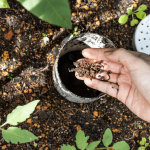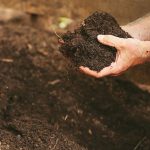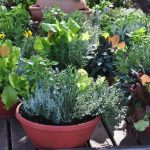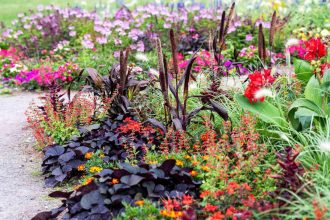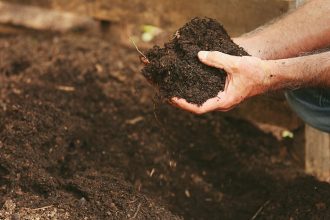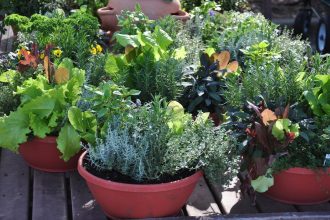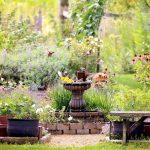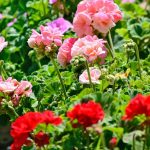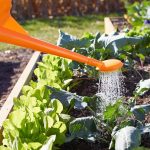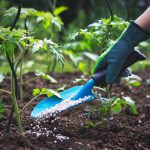In the delicate dance of cultivating a stunning flower garden, there are often unwelcome guests that make an appearance – pests and diseases. These pesky intruders can wreak havoc on your treasured blooms if not properly managed. From pesky aphids to menacing mold, it’s important for gardeners to arm themselves with knowledge on how to identify and combat these common adversaries. In this guide, we’ll explore practical strategies for dealing with common flower garden pests and diseases, helping you protect your floral paradise and keep it thriving all season long.

Identifying Common Flower Garden Pests and Diseases
Flower garden enthusiasts know the satisfaction of a blooming garden, but pests and diseases can quickly turn that joy into frustration. Identifying and addressing common issues is crucial for maintaining the health and beauty of your garden.
Pests:
- APHIDS: These tiny insects feed on plant sap, causing wilting and stunted growth.
- WHITEFLIES: Small white flies that suck sap from plants, leading to yellowing and wilting leaves.
- SPIDER MITES: These arachnids create fine webs on plants and suck out plant juices, causing discoloration and leaf drop.
Diseases:
- POWDERY MILDEW: A fungal disease that appears as a white powdery substance on the leaves, inhibiting photosynthesis.
- BLACK SPOT: A fungal disease that causes black spots on leaves, which can lead to defoliation if left untreated.
- ROOT ROT: A common disease caused by overwatering, leading to root decay and plant death.
Preventative Measures for a Healthy Garden
One of the biggest challenges gardeners face when trying to maintain a healthy garden is dealing with common flower garden pests and diseases. These pesky invaders can wreak havoc on your beautiful blooms if left unchecked. Fortunately, there are several preventative measures you can take to protect your garden and keep it thriving.
Identify the Pest or Disease: The first step in preventing damage to your garden is to correctly identify the pest or disease causing the issue. Once you know what you’re up against, you can research the best methods for dealing with it effectively.
Practice Good Garden Hygiene: Maintaining a clean and tidy garden is essential for preventing the spread of pests and diseases. Be sure to regularly remove any dead or diseased plant material, weeds, and debris from your garden to eliminate potential hiding spots for unwanted intruders.
Encourage Beneficial Insects: Not all insects are bad for your garden – in fact, some can actually help keep pests in check. Encourage beneficial insects like ladybugs, lacewings, and parasitic wasps to make themselves at home in your garden by planting a variety of flowers and providing them with a water source. These helpful bugs can help keep pest populations under control naturally.
By taking these preventative measures, you can help protect your flower garden from common pests and diseases, ensuring that your blooms stay healthy and vibrant all season long.
Natural Remedies to Combat Pests and Diseases
When it comes to maintaining a healthy flower garden, dealing with common pests and diseases is an inevitable challenge for every gardener. Fortunately, there are natural remedies that can help combat these issues without resorting to harsh chemicals.
For pests such as aphids, whiteflies, and spider mites:
- Release ladybugs or lacewings into your garden to eat these pests.
- Create a homemade insecticidal soap by mixing water with a few drops of dish soap and spraying it onto affected plants.
- Plant companion flowers like marigolds, lavender, or chrysanthemums to repel pests.
For common diseases like powdery mildew, leaf spot, and root rot:
- Sprinkle a mixture of cinnamon and water onto affected plants to help combat fungal diseases.
- Apply neem oil, a natural fungicide, to prevent the spread of diseases.
- Avoid overwatering and ensure good air circulation to prevent the development of root rot and other moisture-related diseases.
Implementing Integrated Pest Management Strategies
When it comes to maintaining a beautiful flower garden, dealing with common pests and diseases is a necessary task. By , you can effectively control and prevent issues that may arise.
Pests:
- Aphids: These tiny insects suck sap from plants, causing damage to leaves and stems.
- Slugs and snails: These slimy creatures feast on tender plant leaves, leaving behind holes and slime trails.
- Spider mites: These minuscule pests feed on plant juices, causing leaves to appear stippled and discolored.
Diseases:
- Powdery mildew: A fungal disease that appears as a white powdery substance on leaves, stems, and flowers.
- Botrytis blight: Another fungal disease that causes brown spots and moldy patches on plant tissues.
- Rust: This disease manifests as rust-colored or orange spots on plant leaves and stems.
| Pest | Description |
|---|---|
| Aphids | Tiny insects that suck sap from plants. |
| Slugs and snails | Slimy creatures that feast on tender plant leaves. |
In conclusion, maintaining a beautiful and healthy flower garden requires diligence and proactive steps to prevent and address common pests and diseases. By staying vigilant and implementing these tips and tricks, you can ensure your garden remains a vibrant and thriving oasis for both you and your beloved blooms. Remember, a little care and attention go a long way in creating a garden that will bring you joy for years to come. Happy gardening!


